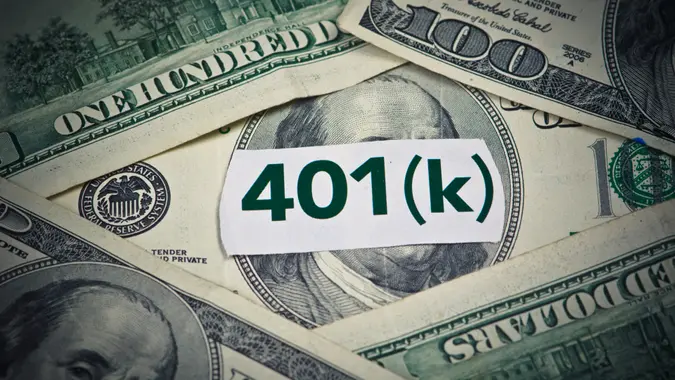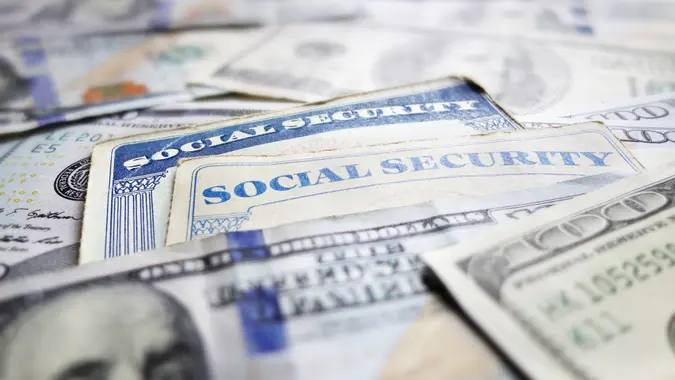Advertiser Disclosure
GOBankingRates works with many financial advertisers to showcase their products and services to our audiences. These brands compensate us to advertise their products in ads across our site. This compensation may impact how and where products appear on this site. We are not a comparison-tool and these offers do not represent all available deposit, investment, loan or credit products.
5 Money Moves Boomers Can Make To Combat Inflation
 Written by
Heather Taylor
Written by
Heather Taylor
 Edited by
Zuri Anderson
Edited by
Zuri Anderson

Commitment to Our Readers
GOBankingRates' editorial team is committed to bringing you unbiased reviews and information. We use data-driven methodologies to evaluate financial products and services - our reviews and ratings are not influenced by advertisers. You can read more about our editorial guidelines and our products and services review methodology.

20 YearsHelping You Live Richer

Reviewed by Experts

Trusted by Millions of Readers
Inflation rose by 2.8% on an annual basis in February 2025, according to the most recent Consumer Price Index (CPI). Grocery prices, particularly for eggs, experienced a 2.6% uptick the same month. Those in the baby boomer age bracket are back to utilizing strategies that will allow them to cut back on expenses and ensure the money saved goes towards their retirement funds.
Which tried and true approaches, as well as fresh moves, should they make? To find out, GOBankingRates spoke to Greg Clement, CEO of Freedomology, which is described as a framework that allows you to master your financial freedom.
Clement recommends baby boomers follow these five strategies to combat inflation.
Beef Up Your Emergency Fund
Many boomers may already have an emergency fund. The baseline version of this fund is three to six months’ worth of savings that can cover unforeseen expenses, like a visit to the emergency room, to avoid going into debt.
Clement wants boomers to take this fund a step further and consider the “Minimum-to-Survive, Maximum-to-Thrive Rule.”
“Define your minimum (bare essentials like rent and groceries) and maximum (comfortable life with extras) for six months, then save a fund in that range,” Clement said.
He uses the example of a boomer that determines their minimum is $1,200 a month. For six months, they would need $7,200 in their emergency fund. To ensure ease in accessibility, Clement recommends keeping this money saved in a high-yield savings account with a 4% APY.
Pay Off High-Interest Debt
Boomers with high-interest debt, particularly credit cards, are advised by Clement to start chipping away at the debt and paying it off.
While many financial experts recommend the debt snowball, Clement’s recommendation is to use the debt avalanche method for repayment. Debt avalanche, as a refresher, means paying off the debt with the highest interest rate first and working your way down to debt with lower interest.
Whenever possible, he also recommends paying more than the minimum amount owed. Using the example of adding an additional $50 monthly payment to a $2,000 balance, Clement said you’ll be able to cut down the payoff time and save $200 in interest.
Get Strategic About ‘Finding’ Money
How frugal is your budget, really? Are there any subscriptions you have that you switch out to a cheaper subscription tier (going from ad-free to with ads to save a couple extra dollars) or cancel altogether? How about calling your internet provider or phone carrier to negotiate a cheaper monthly plan? To reroute cash, Clement said now is the time to slash subscriptions and haggle bills.
Apply the GEL Framework (Give, Experience, Live)
Here’s how the GEL framework breaks down, according to Clement: Within this strategy, boomers live off 60% of their income. They take the remaining 40% and divide it into two halves. The charities you love and your future self, like investments, get 20%. The other 20% goes towards experiencing the world with loved ones.
Let’s use the example that you have a $5,000 monthly take-home income. Clement said boomers would use $3,000 to live on and cover bills, give $1,000 to your future self and the causes you care about and take the remaining $1,000 to fund experiences like family trips and travel.
Build Income-Producing Assets (IPAs)
Clement referenced data from the IRS which states wealthy Americans average seven income-producing assets. Think rentals, businesses and side hustles, among others.
Clement said these assets are meant to live outside of you but are born by you. For example, a boomer may rent out a guest house or unused room in their home for a college student to reside in and pay rent as a tenant while they’re in school.
“The sooner you do, the closer you are to freedom,” he said. “Never depend on one income stream, which is what most people spend their lives doing.”
More From GOBankingRates
Share This Article:




You May Also Like



Here's the Salary You Need To Make To Get the Maximum Social Security Benefit
November 21, 2025
4 min Read



3 Smart Retirement Planning Changes To Make in the Age of High Inflation
November 20, 2025
4 min Read

What It Takes To Be Upper Class in America Plus 10 Safest Retirement Towns for Upper Class
November 21, 2025
4 min Read

America's 50 Most Affordable Places To Retire and Enjoy All Four Seasons
November 20, 2025
4 min Read






1 in 5 People Are Retired in These States -- Here Is What Retirement Costs Them in 2025
November 20, 2025
4 min Read

5 Cities Where You Can Retire for $1,500 a Month and Enjoy All 4 Seasons
November 21, 2025
4 min Read
- How Long Will My Money Last?
- How Much Do You Need To Retire?
- How To Prepare For Retirement
- How To Save For Retirement Without A 401K
Learn More About Early Retirement Planning
Make your money work for you
Get the latest news on investing, money, and more with our free newsletter.
By subscribing, you agree to our Terms of Use and Privacy Policy. Unsubscribe at any time.


Thanks!
You're now subscribed to our newsletter.
Check your inbox for more details.



Sending you timely financial stories that you can bank on.
Sign up for our daily newsletter for the latest financial news and trending topics.
For our full Privacy Policy, click here.
Looks like you're using an adblocker
Please disable your adblocker to enjoy the optimal web experience and access the quality content you appreciate from GOBankingRates.
- AdBlock / uBlock / Brave
- Click the ad blocker extension icon to the right of the address bar
- Disable on this site
- Refresh the page
- Firefox / Edge / DuckDuckGo
- Click on the icon to the left of the address bar
- Disable Tracking Protection
- Refresh the page
- Ghostery
- Click the blue ghost icon to the right of the address bar
- Disable Ad-Blocking, Anti-Tracking, and Never-Consent
- Refresh the page



